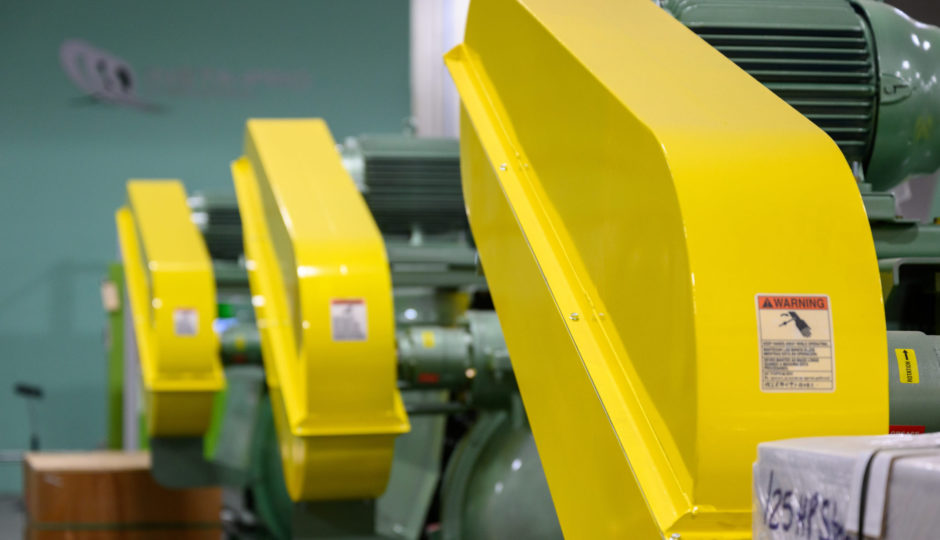Making TSP – Key Components of a Facility

Textured Soy Protein (TSP) is a common plant-based protein source for human consumption. It is often used as an economical alternative or partial replacement for animal-based protein sources. The texturization process for TSP relies on breaking down protein chains and realigning them to create a texture and appearance like animal-based protein sources. There are several methods for making TSP, but each method should use raw ingredients with high protein quality. This blog will focus on making TSP through extrusion using mechanically expressed soy flour as the primary raw ingredient. This process is greatly affected by several factors including raw ingredient properties, TSP extrusion process parameters, and post extrusion processing steps. Making TSP is a complicated process but focusing on a few key components can help keep processing parameters in check for making a successful product.
When using mechanically expressed soy flour as the primary raw ingredient, it is important to consider protein, fiber, and fat content as well as particle size and protein dispersibility index (PDI). High protein and high PDI soy flour will be easier to successfully texturize. Increasing the protein content by removing fiber and fat should be considered. Removing fiber can be achieved through a dry dehulling process. Dehulling removes the outer seed coat or hull which is mostly fiber. Removing fat can be achieved through extrusion and mechanical oil pressing to create a low-fat soybean meal. Soy cake exiting the press needs to be ground to a specific fine particle size. This typically involves a hammermill followed by a pulverizer. Maintaining a narrow particle size distribution will be beneficial. Finally, PDI should be considered. PDI is a measure of protein functionality and is indicative of the amount of heat treatment or cooking. Minimizing heat treatment from extrusion, oil pressing, and particle size reduction will help to keep PDI levels high.
Processing soy flour into TSP through extrusion relies on heat, time, and moisture addition factors. A preconditioner should be considered for mixing soy flour, additional dry ingredients, water, and steam into a homogeneous product. Parameters should be adjusted to provide the proper amount of moisture addition and product heating for a set retention time. The extruder barrel is the primary means for adding heat to the product. Additional water can also be added in the extruder barrel. Adjusting the barrel screw and steam lock configuration will affect heat addition and retention time thus changing the texturization level. Product typically exits the extruder barrel through several dies and a cutting device. The die and cutter configuration can change the operating pressure and retention time. Quantity, shape, size, inlet taper, and land length are all parameters to consider for the dies. The number of cutting knives and cutter speed should also be considered. All these parameters can be adjusted to create the desired product shape, size, texture, bulk density, and water absorption ratio.
Post extrusion processing parameters to consider include adding an additional standalone cutting step. This may be required for creating the desired product size and shape. This can, however, affect the bulk density and water absorption ratio of the final product. Any additional cutting process should be performed when the product is still wet and hot. This will help to reduce fines. Afterwards, the cut TSP should pass through a dryer/cooler to reduce the moisture content and temperature to levels safe for storage. A screening step may be required to remove fines and separate sizes. Finally, the finished TSP product is ready for packaging.
If you are interested in learning more about the TSP production process, please reach out to your Insta-Pro sales or service team member.

